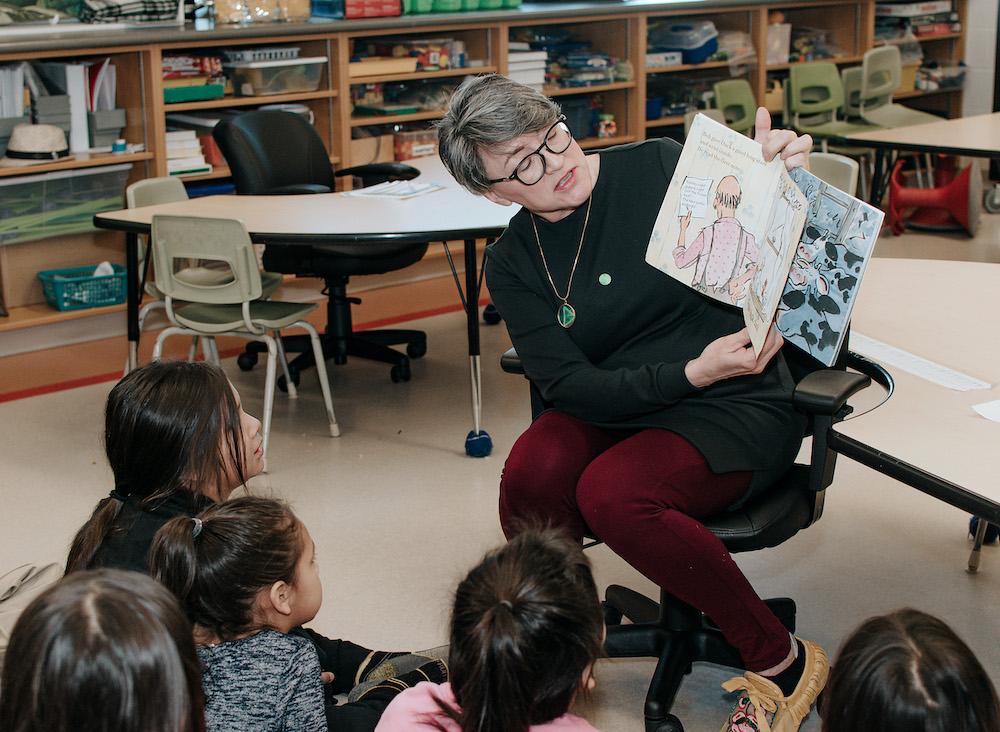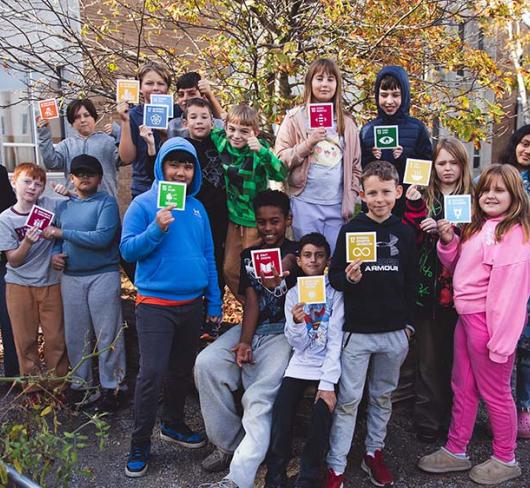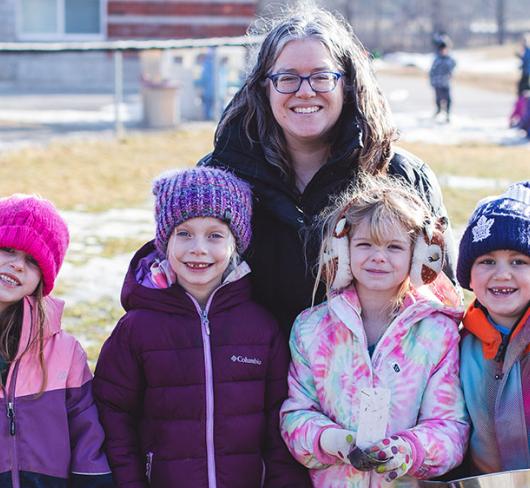
Fighting Back: Resisting the Legacy of Environment Racism
“When I get my farm back, my boy, when I get my farm back.” These are the words that my great-grandfather Rory McPherson often said to his grandson (my uncle) as they sat together at their home in the community of Gojijiing (anglicized as Couchiching First Nation) in the 1940s and 50s. As a young man, Rory had a farm on the Rainy River, downstream about 40 km, but had been forced to relocate to reserve lands “designated for the Indians” in the late 1800s. (Note: ‘Indian’ is the terminology of the treaties and of the Indian Act, and is used in this context.) After Treaty 3 was signed in 1873, colonization led to the dispossession of my great-grandfather’s farm. As the settler population in the area increased, lands occupied by Indigenous peoples were claimed for industry, settlements and farming. Resource extraction began first with forestry for building materials and then for papermaking. Around 1900, a dam was built on the Rainy River at Fort Frances to provide water for a papermill. This affected the way of life of Anishinabek (Ojibwe people) living on the connected lakes and rivers, flooding traditionally used lands and displacing the Anishinaabeg yet again as people were moved to new reserve sites.
Since 2010, Couchiching has been advocating for cleanup of a site contaminated by sawmill operations nearly 100 years ago. It had been leased by Indian Affairs for almost 100 years and used for commercial and industrial activities by non-Indigenous businesses. I hear similar stories about Indian reserves across Canada and the environmental impacts that have had (and continue to have) devastating effects on the people and their communities. A particularly tragic story is that of the Anishinaabe communities of Asabiinyashkosiwagong Nitam-Anishinaabeg (Grassy Narrows First Nation) and Wabaseemoong (White Dog) Independent Nations in northwestern Ontario.
Though I only learned the term environmental racism recently, I realize that I have spent a lifetime living with and learning about the forms of racism experienced by Indigenous peoples. I’ve had family say they’ll no longer eat the fish from the creek where my grandfather fished because it’s downstream from industrial and municipal waste disposal sites. Asabiinyashkosiwagong and Wabaseemoong Anishinaabeg (Ojibwe people) are left to deal with the loss of traditional ways because of environmental damage and a lack of health care in their communities for themselves and the generations that have been affected. Their burgeoning awareness of racism shapes the view the Indigenous students I teach have of the world. These students are looking for reassurances that they can be active in building a good life for themselves in their communities. Seizing these moments to teach about self-advocacy and social justice has become an important focus for me. There are no EQAO questions for this, but it may be one of the most valuable lessons they can learn.
Author Nina Lakhani defines environmental racism as how “ecological hazards and climate disasters have the harshest impacts on people of color, native tribes and those on low incomes.” She notes that “racism dictates who gets dumped on,” describing the phenomenon using examples based in the U.S.: water contamination experienced by the predominately Black community of Flint, Michigan, and Native American communities in North Dakota experiencing illness from contamination by the coal industry, uranium mining, over-fertilization and oil. Lakhani notes that impacts on a community include social relationships, economic instability, forced relocation and incarceration.
In Canada, the work being done in Nova Scotia by Dr. Ingrid Waldren through the ENRICH (Environmental Noxiousness, Racial Inequities and Community Health) Project digs deeply into the socioeconomic, political and health effects of environmental racism in both Mi’kmaq and African Nova Scotian communities. Waldren and her team of researchers developed maps to show the location of landfills, waste dumps and hazardous industrial sites in relation to Mi’kmaq and African Nova Scotian communities. The disparity was clear; these communities were highly over-represented in the data even when the researchers factored for population proportions.
When I look at Canada’s history through the lens of environmental racism, it becomes apparent that Indigenous communities aren’t the only ones affected; other groups of racialized people are also disproportionately affected. This understanding helps contextualize the environmental events plaguing Asabiinyashkosiwagong Nitam-Anishinaabeg (Grassy Narrows First Nation) and Wabaseemoong (White Dog) Independent Nations in northwestern Ontario, which started over 50 years ago at the pulp and paper mill in Dryden, Ontario. The mill lies approximately 150 km from the Manitoba border on the Trans-Canada Highway. Between 1962 and 1970 Dryden Chemicals and Reed Paper Limited dumped 9,000 kg of mercury into the English River, polluting the English-Wabigoon water system where these communities got their water and fished both for their families and to make a living at commercial fishing. By 1970, the effects of mercury contamination ended commercial fishing and the effects of mercury poisoning (called Minamata disease) were showing up in community members. Several generations of Anishinaabe people from these communities suffer from mercury poisoning, with estimates indicating that 90 percent of residents are affected.
Mercury, it turns out, is a particularly nasty contaminant. Its effects on the environment, including living organisms, are devastating and irreversible. When it enters the environment, mercury changes into its most toxic form, methylmercury, working its way up the food chain from organism to organism through consumption. Mercury is not excreted; it accumulates in the human body affecting the brain, kidneys, lungs and skin. Symptoms of mercury poisoning include red cheeks, fingers and toes; rapid heartbeat and high blood pressure; loss of hearing and vision; memory loss; speech problems; loss of teeth, hair, and nails; and birth defects. Mercury is passed to unborn children in utero.
Despite years of requests, the communities have found no help from either the company or the government. Dealing with the physical and psychological effects of this environmental disaster for more that 50 years, the Anishinaabeg have continued to advocate for the clean-up of the river and for the health needs of their people.
SPEAKING OUT
Finally, in 2016, a former papermill worker broke the silence about mercury dumping in Dryden. The government admitted to knowing about mercury disposal at the mill, but incredibly, still maintained that the mercury wasn’t the source of the contamination. Chief Simon Fobister of Asabiinyashkosiwagong told the CBC, “I am shocked and dismayed by Ontario’s failure to protect our people who live downstream from this reported toxic mercury dump.” Fobister continued to advocate for his community as his body deteriorated. After his death in 2018, his family vowed to continue his advocacy.
Judy DaSilva, another lifelong advocate from Asabiinyashkosiwagong, is a water protector. In the Anishinaabeg worldview, water is regarded as a sacred life-form; it is essential to life and must be protected. DaSilva has faced many obstacles in doing her work, including being served with an injunction by CN Rail for holding a water ceremony alongside the railway tracks. Despite this, she continues to advocate for the water; in her words “As Anishinaabeg, I guess our strength as people…[is] to stand up for the water in any way that we can, even if it’s a ceremony.” (Council of Canadians expresses solidarity, 2015). DaSilva is part of a community of Indigenous women worldwide who advocate for water; their ranks include respected women such as Josephine Mandamin (who passed in 2018) and 15-year-old Autumn Peltier of Wikwemikong who has received international recognition for her work. The work of these women transcends race and political boundaries.
The youth of Asabiinyashkosiwagong are no strangers to activism. In 2002, youth built a blockade on their territory to stop clear cut logging. They regularly participate in events and rallies; in 2019 they led the River Run Event in Toronto. The work being done in this community has attracted the attention of the Pulitzer Centre, an award-winning, non-profit news organization that partners with journalists and newsrooms to support in-depth reporting on critical global issues.
This has led to a project called Generations of Activism: The Grassy Narrows First Nation’s Fight for Clean Water. They’ve also used the arts to express community in the song Home to Me developed in 2016 with the support of the N’we Jinan Artists youth empowerment and education program. The video, available on YouTube, sends a powerful message about the students’ love of their community and the land.
Today, both communities continue to advocate for the cleanup of their traditional lands. Although both levels of government made commitments in 2017 to address these issues through remediation of the water system (provincial) and building a health facility in the community (federal) there has been no definitive action to date. A youth-led campaign for mercury justice was one of the focal cases of last month’s global Write for Rights campaign. A new generation of young people are undertaking advocacy with the knowledge that this is a life-or-death situation. The story is far from over for the people from Asabiinyashkosiwagong.
THE ROLE OF EDUCATORS
Our experience as educators, activists and community organizers teaches us that our role as allies is to support communities as they work to identify the issues and decide what action to take to resolve them. Ontario educators come from many cultural communities. The important question is how can settler-Canadians and other outsiders support communities in their fight against environmental racism? I’d like to make the following suggestions.
Start by educating yourself about Canada’s colonial history. Although it’s popular to view Canada as being non-racist (as compared to our southern neighbours), closer examination reveals a different reality; on a systemic level, racialized people experience racism in many ways. Take the time to look into the history of government policy pertaining to Indigenous and racialized people. Read information from the Ontario Human Rights Commission about systemic racism. Look for other resources, including (but not limited to) videos, TED Talks and books about systemic racism.
Research the work that community members are doing to build capacity and take back power. Anishinaabe women in Ontario organize water ceremonies and water walks. Attend any open events, listen to what community members have to say, and share this information with others. Look for events near your community for opportunities to learn more.
Learn about being an ally through your research. ETFO has a conference focused on allyship and many useful resources are available online.
Look at your own community or region. What types of industry are being carried out that may have environmental impacts? Consider things like railway lines, transit routes, highways, disposal sites. Who is most at risk of being affected by these? Is there an opportunity to do community organizing or support ongoing efforts?
IN THE CLASSROOM
Children have a natural sense of fairness. By shaping the discussion to include ideas of who is affected by injustice we can help them develop empathy; this is a focus that begins in Kindergarten programs. Discussions about advocacy are next; these can help children understand that even small actions can make a difference, allowing them to see themselves in advocacy roles. I’ve found a small sampling of resources to help you get started.
- ETFO’s resource Social Justice Begins with Me provides a comprehensive list of resources for classroom use (etfo.ca/buildingajustsociety/equityresources/pages/socialjustice.aspx)
- Imagineaction is the social justice program of the Canadian Teachers’ Federation (https://www.imagine-action.ca/)
- Teaching Tolerance includes free resources for classrooms (tolerance.org)
- The National Institute of Environment Health Sciences has teaching resources and online content for children (https://kids.niehs.nih.gov/topics/environment-health/environmental-justice/index.htm)
- KQED Mind/Shift has teaching resources, and shares news from work done in U.S. schools (kqed.org/mindshift/48592/7-books-that-teach-kids-about-social-justice-and-activism)
- Road to Racial Justice is a free, downloadable social-justice-themed board game for ages 13+ (roadtoracialjustice.org/)
- Education World has a sampling of activities suitable for elementary grades (educationworld.com/a_lesson/socialjustice-activities-stude)
My great-grandfather would probably be sad to know that his farm is never coming back to us. Our community continues to struggle, on one hand; on the other, I see my people building capacity to address the challenges we’ve faced. Environmental racism is but one challenge, but as I see it, an important part of moving forward in this work is to invite educators to open their minds and hearts and learn about these issues and then share our learning with our students. Will you accept this invitation?
JoAnne Formanek Gustafson is an Anishinaabe of Gojijiing and a member of the Rainy River Occasional Teacher Local.

